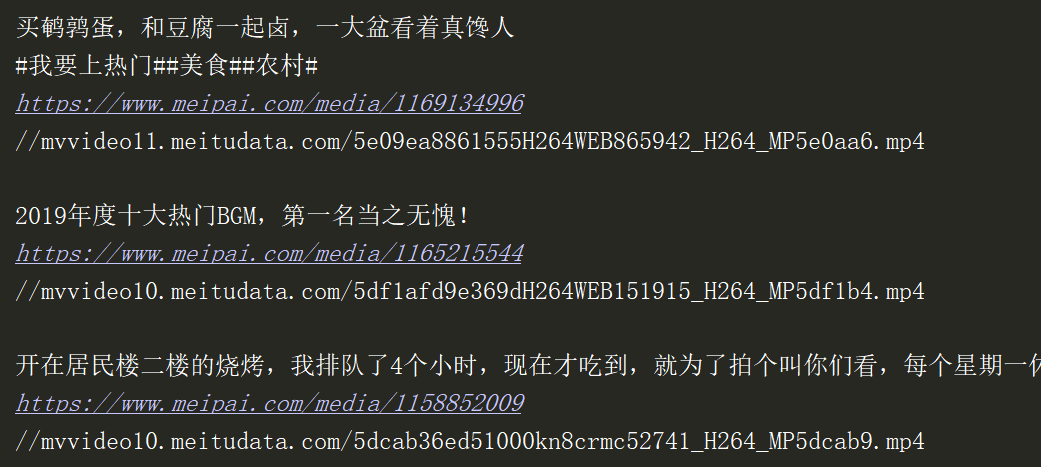美拍链接:https://www.meipai.com/
找到视频链接的标签,源代码中没有这个div

通过Fiddler抓包,找到class="mp-h5-player-layer-video"的div由哪个js文件生成的

打开对应的js文件,对其进行断点,找到src生成的方式

发现src参数在这个位置

此时需要找到字符串的来源、再模拟出这个方法

最后发现字符串是一开始就存在于网页中的

在请求网页时,提取出视频对应的字符串,再通过模拟出的方法即可得到URL
import threading
import requests
import base64
import re
# 解密video的URL
def Decrypt_video_url(content):
str_start = content[4:]
list_temp = []
list_temp.extend(content[:4])
list_temp.reverse()
hex = ''.join(list_temp)
dec = str(int(hex, 16))
list_temp1 = []
list_temp1.extend(dec[:2])
pre = list_temp1
list_temp2 = []
list_temp2.extend(dec[2:])
tail = list_temp2
str0 = str_start[:int(pre[0])]
str1 = str_start[int(pre[0]):int(pre[0]) + int(pre[1])]
result1 = str0 + str_start[int(pre[0]):].replace(str1, '')
tail[0] = len(result1) - int(tail[0]) - int(tail[1])
a = result1[:int(tail[0])]
b = result1[int(tail[0]):int(tail[0]) + int(tail[1])]
c = (a + result1[int(tail[0]):].replace(b, ''))
return base64.b64decode(c).decode()
# 获取网页的内容
def Page_text(url):
headers = {
'User-Agent': 'Mozilla/5.0 (Windows NT 6.1; WOW64; rv:21.0) Gecko/20130331 Firefox/21.0'
}
return requests.get(url, headers=headers).text
# 解析单个网页
def Parse_url(video_title, url_tail):
page_url = 'https://www.meipai.com' + url_tail
video_page = Page_text(page_url)
# 获取视频加密后的的URL
data_video = re.findall(r'data-video="(.*?)"', video_page, re.S)[0]
video_url = Decrypt_video_url(data_video)
print("{}
{}
{}
".format(video_title, page_url, video_url))
def Get_url(url):
index_page = Page_text(url)
# 各个视频的标题
videos_title = re.findall(r'class="content-l-p pa" title="(.*?)">', index_page, re.S)
# 各个播放网页的URL
urls = re.findall(r'<div class="layer-black pa"></div>
s*<a hidefocus href="(.*?)"', index_page, re.S)
t_list = []
for video_title, url_tail in zip(videos_title, urls):
t = threading.Thread(name='GetUrl', target=Parse_url, args=(video_title, url_tail,))
t_list.append(t)
for i in t_list:
i.start()
if __name__ == '__main__':
Get_url('https://www.meipai.com/')
